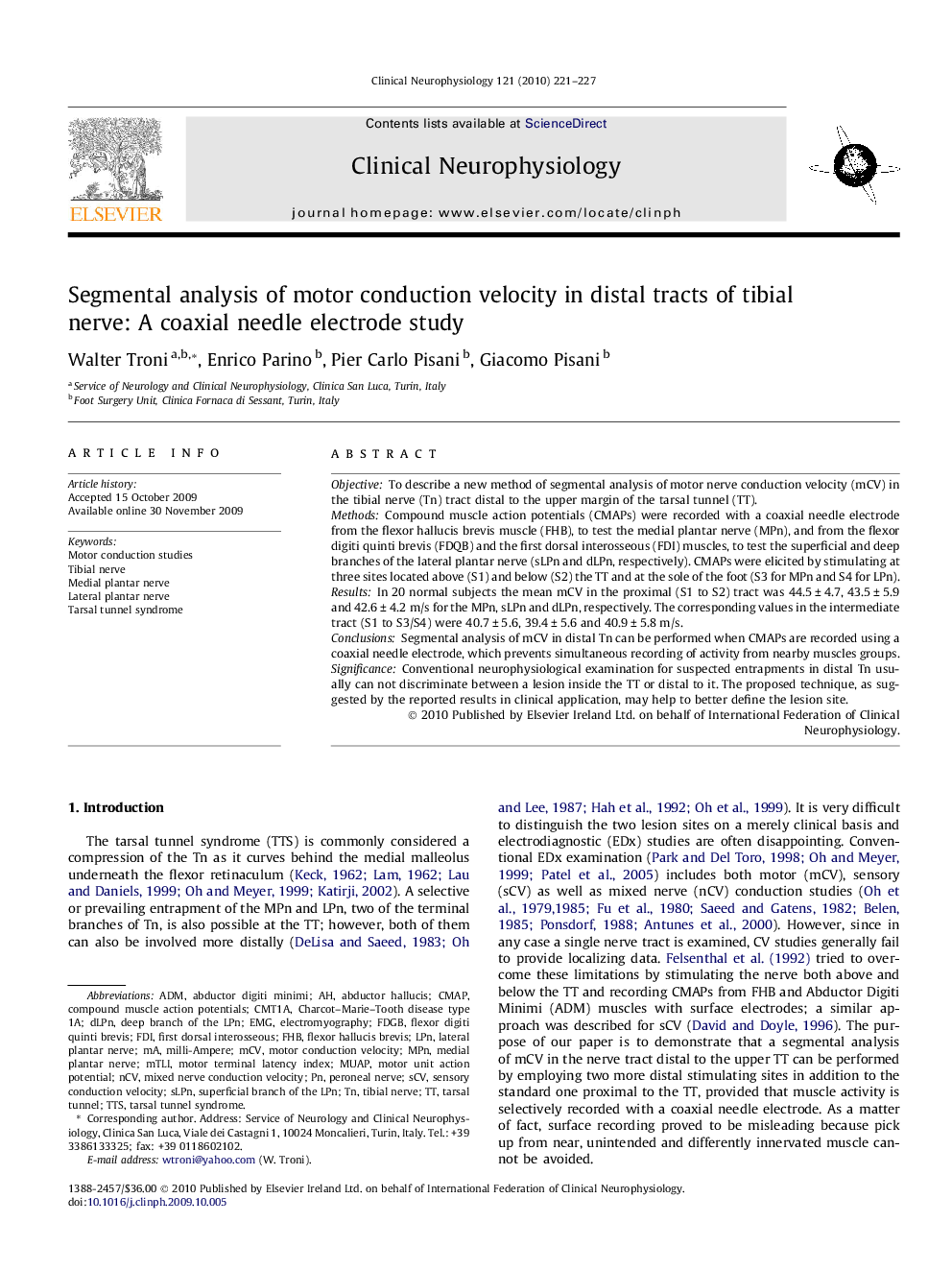| Article ID | Journal | Published Year | Pages | File Type |
|---|---|---|---|---|
| 3045325 | Clinical Neurophysiology | 2010 | 7 Pages |
ObjectiveTo describe a new method of segmental analysis of motor nerve conduction velocity (mCV) in the tibial nerve (Tn) tract distal to the upper margin of the tarsal tunnel (TT).MethodsCompound muscle action potentials (CMAPs) were recorded with a coaxial needle electrode from the flexor hallucis brevis muscle (FHB), to test the medial plantar nerve (MPn), and from the flexor digiti quinti brevis (FDQB) and the first dorsal interosseous (FDI) muscles, to test the superficial and deep branches of the lateral plantar nerve (sLPn and dLPn, respectively). CMAPs were elicited by stimulating at three sites located above (S1) and below (S2) the TT and at the sole of the foot (S3 for MPn and S4 for LPn).ResultsIn 20 normal subjects the mean mCV in the proximal (S1 to S2) tract was 44.5 ± 4.7, 43.5 ± 5.9 and 42.6 ± 4.2 m/s for the MPn, sLPn and dLPn, respectively. The corresponding values in the intermediate tract (S1 to S3/S4) were 40.7 ± 5.6, 39.4 ± 5.6 and 40.9 ± 5.8 m/s.ConclusionsSegmental analysis of mCV in distal Tn can be performed when CMAPs are recorded using a coaxial needle electrode, which prevents simultaneous recording of activity from nearby muscles groups.SignificanceConventional neurophysiological examination for suspected entrapments in distal Tn usually can not discriminate between a lesion inside the TT or distal to it. The proposed technique, as suggested by the reported results in clinical application, may help to better define the lesion site.
